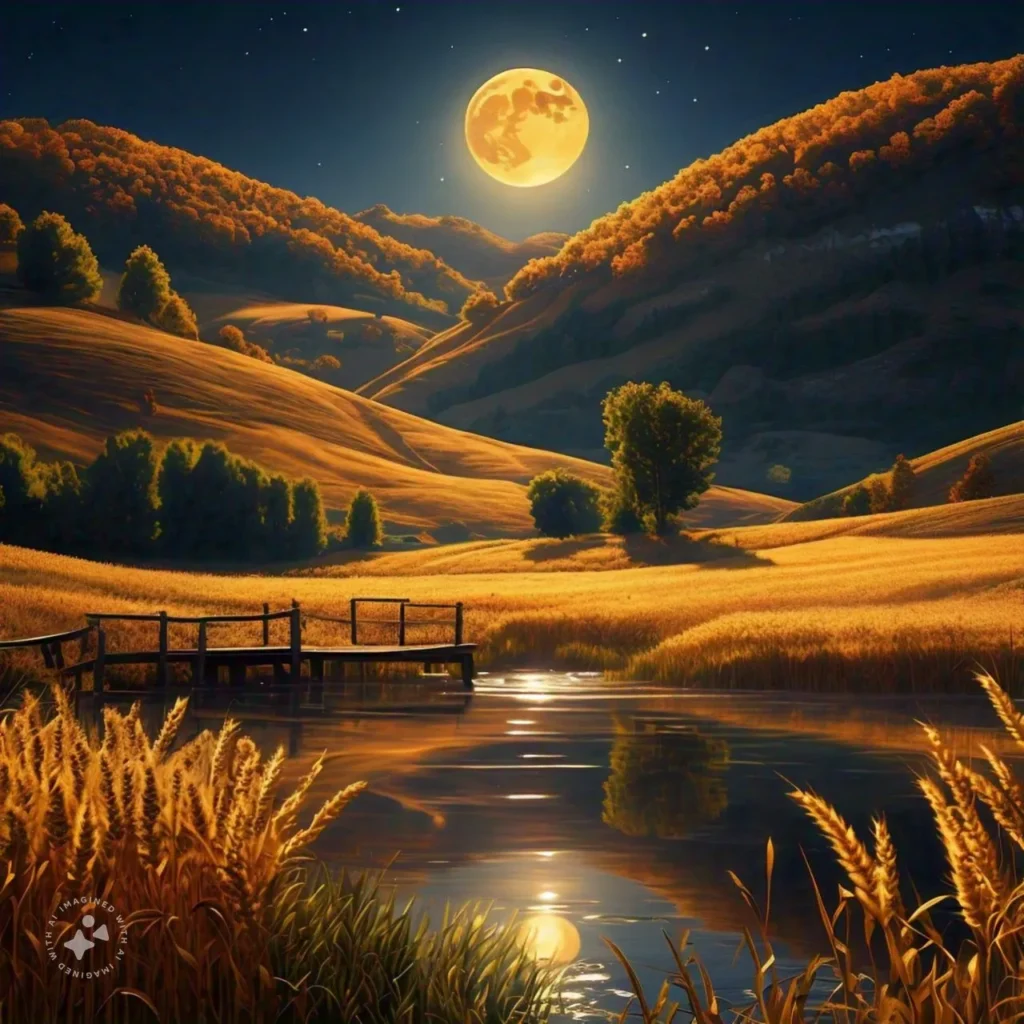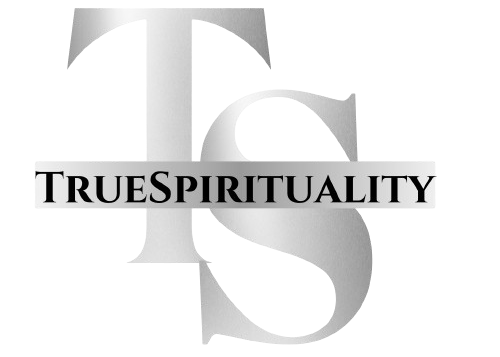The Harvest Moon is a full moon that occurs near the autumnal equinox, which occurs around September 22. It is known to appear fuller and brighter than other moons, and rises shortly after sunset, providing additional light. This was traditionally beneficial to farmers who used daylight to harvest their crops.

In this article, we will explore the origins and characteristics of Harvest Moon Sprites, their role in ancient seasonal rituals, and their enduring spiritual legacy.
Discover how harvest moons and goblins have influenced art, literature, festivals, and more throughout human history. Let’s reveal the magic of these enduring nature legends!
What is the harvest month?
For centuries, cultures around the world have told stories of harvest sprites – magical nature spirits who appear under the harvest moon to bless the earth and bring good luck.
The Harvest Moon is a common fact on the fall calendar, but few people know the fascinating mythology and folklore behind this celestial event.
Before we dive into goblin lore, let’s cover some Harvest Moon basics.
- The Harvest Moon is the full moon closest to the autumnal equinox, which falls between September 22 and 23 in the Northern Hemisphere.
- It is called “Harvest” because it rises near sunset, illuminating the fields for farmers who harvest their crops until dusk.
- Its proximity to the horizon creates a glowing orange color, attributed to the spirit of the harvest.
- Other names include the Corn Moon, Barley Moon, Wine Moon, Singing Moon, and Mid-Autumn Festival Moon.
- For centuries, cultures have celebrated the Harvest Moon through bountiful harvest rituals and spiritual connection.
- Now let’s explore the mythical creatures believed to appear beneath its fertile aura.
Introduction to Harvest Goblins
Harvester goblins are folk nature spirits with deep roots in European, Celtic, Slavic, and Norse mythology. They are described as follows:
- Little magical creatures that embody the spirit of plants and change the seasons.
- They appear as small or childlike humanoids about the size of a mouse.
- It is closely related to agriculture, fertility and crop rotation.
- Conservationists are tasked with protecting trees, plants, and wildlife.
- Guardians of the sacred balance between humanity and the natural world.
- According to folklore, the harvest ensures a bountiful harvest every year in late summer and early fall. But where did these nature myths originate?
Early cultural origins and beliefs
The legend of the harvest goblin originated in agricultural societies whose fortunes depended on the successful growth of crops.
- Ancient Europeans believed that the Harvest Moon marked the only night of the year when goblins appeared to practice their magic.
- Celtic tradition described goblin tribes arriving at the first crescent of the Harvest Moon to bless the land.
- German tales warned that if goblins were not properly appeased, they would ravage the fields or spoil the harvest.
- Slavic legend says that harvest moon goblins collect offerings left on fence posts to encourage a fruitful harvest.
- Norse folklore believes that leaving gifts of milk, cake, and honey for goblins will bring blessings and protection.
- In all cultures, harvest goblins played an important ritual role. Let us then examine some of their rituals and festivals.
Ancient harvest moon rituals and performances
In the harvest month, families and villages perform special rituals to welcome the goblins and gain their favor:
Harvest shrines
Outdoor shrines were erected on farmland and decorated with offerings of fruits, vegetables, flowers, and goblins.
Chandi Eds
Magnificent feasts were held under the harvest moon with place settings for hidden goblins.
Fire and dance
Bonfires, chants and dances mimicked the supposed activities of goblins on the plains.
Milk and honey
Bowls of milk and honey were left at natural altars and at the goblins’ gates.
The magic of nature
Small nature amulets, such as acorn pendants and cornhusk dolls, were produced to protect property from unsavory goblins.
Moonlight walks
It was believed that walking under the harvest moon allowed you to catch a glimpse of goblins dancing among the grains.
This ritual shows devotion, hope, and excitement around the mythology of the Harvest Moon being. Even after centuries, their magic is still felt.
Cultivation of goblins in literature and art.
Images of harvest goblins have greatly influenced literature, music, and the visual arts. Here are some notable examples:
- Romantic composers of the 19th century, such as Rimsky-Korsakov, depicted goblins in works such as “The Song of the Harvest Spirit.”
- Writers such as Keats, Blake, and Shakespeare referred to the harvest of goblins to evoke the pastoral world.
- Fantasy writers such as Tolkien have adapted folklore into modern literature.
- Artists and illustrators such as Arthur Rackham captured scenes of goblins appearing under the harvest moon.
- Brian Freud’s famous “fairy” art brought modern enthusiasm to the depiction of living beings.
- Animators like Studio Ghibli continue to incorporate the themes and aesthetics of vintage animation.
- Their small stature and exotic nature have made the crop particularly popular in children’s media and entertainment.
You may also like : Spiritual Meaning of Moths in Your House: Exploration
Modern Harvest Moon Holidays and Festivals
Many contemporary harvest festivals incorporate historical Harvest Moon rituals and goblin symbolism:
Mid-Autumn Festival (Asia)
This Chinese festival is centered around the Harvest Moon and features mooncakes, lanterns, and moon worship.
Mabon (pagan)
Mabon celebrates the autumn equinox with nature offerings, feasts, and altars to honor the goblin world.
Moon Festival (Europe and America)
From the Blackpool Illuminations in the United Kingdom to the Moon Festival in Ontario, harvest moons are celebrated with fireworks and light displays.
Halloween (globally)
The pagan origins of Halloween include themes of harvest creatures, from children’s costumes to candy displays.
Moon observation (Japan, Asia)
Tsukimi moon viewing festivals celebrate the beauty of the harvest moon while giving thanks for the foods and spirits of the harvest.
Wine festivals
Harvest moons are associated with winemaking, and are celebrated with grape harvests, tastings, and the blessings of the wine moon.
Obviously, the Harvest Moon still influences the festival today. But do goblins themselves survive in modern culture?
Evolution of Harvest Sprite symbolism
Although belief in literal goblins has waned, their symbolic spirit remains:
- Representing our connection to nature’s cycles and our role as stewards of the environment.
- Reminds us to embrace wonder, creativity and childlike joy.
- Capture the magical glow that can be felt while gazing at the Harvest Moon.
- A symbol of the unseen worlds and spirits that share our Earth.
- Introducing our innate need to create meaning through myth and folklore.
- Harvest sprites remain treasured symbols during a symbolic period of gratitude, contemplation, and childlike imagination.
FAQ: Frequently Asked Questions
What is the best offer for today’s harvest?
Things like honey, milk, fallen flowers, moon or star-shaped cookies, garden fruits and vegetables, acorns, twigs, straw toys, and harvest foods make thoughtful, modern displays.
When and where can you see real crop objects?
Harvester goblins are found in mythology and symbolism today, capturing the magic of nature and imagination. Although some still believe in the existence of literal goblins, their existence is unproven.
Do crop organisms have different names across cultures?
Yes, there are similar legends of goblins with names like faerie, fae folk, Pixie, Pooka, Wee Folk, Little Folk, Little People, Brows, and more, depending on the region and culture.
Is it possible to photograph real crop objects?
While people continue to try to obtain photographic evidence of goblins, none of it has been conclusively proven to be true. Blurrs are often bugs, dust, or common optical illusions. True orcs are still elusive.
Does the harvest crop appear only in fields and fields?
Traditionally associated with agriculture, the lore often describes goblins inhabiting gardens, orchards, meadows, forests, misty hills, forest valleys, and other natural sites.
Final words
For centuries, the magical Harvest Moon has stirred fear, hope, and mythical goblins in the human soul. While magic evolves with culture, the Harvest Moon continues to awaken our sense of wonder and connection today.
So, as you look at the upcoming Harvest Moon, open your heart and mind to the possibility of magic happening. Hear the distant songs of the goblins. Flashing in the bright moonlight. Breathe the fresh night air full of potential.
Who knows – if you believe, you might feel some goblin magic that night!
